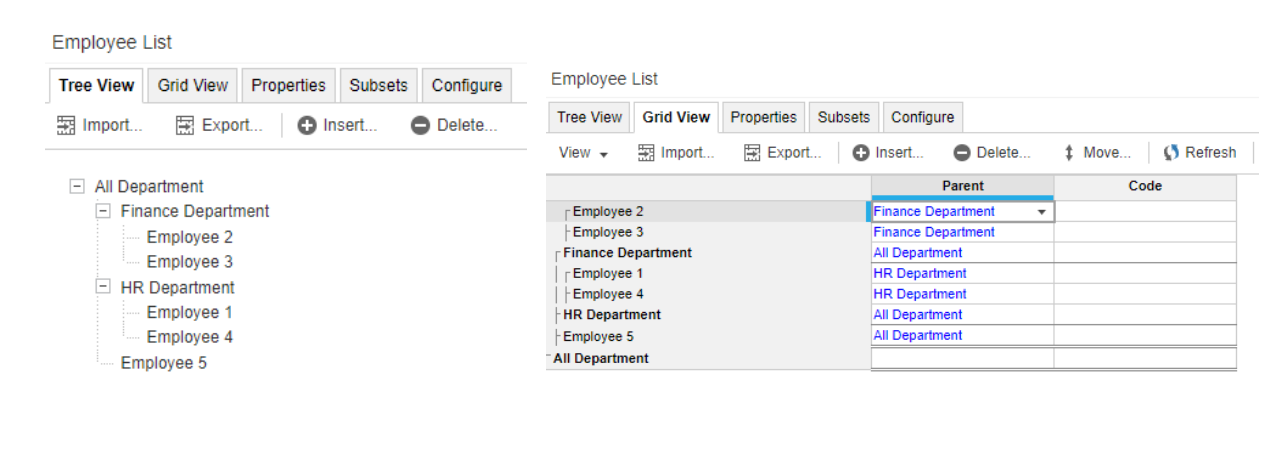1. Flat List
No hierarchy is present inside a flat list. For example, you can use a flat list for information that does not require structure at multiple levels, such as transactional data.
 2. Simple List
2. Simple ListSimple lists contain list items with a parent/child hierarchy.

 3. Composite List
3. Composite ListComposite List contain multiple lists that each roll up to a parent list. For example, the
State list rolls up to the
Zone list, and the
Zone list rolls up to the
Country list.


4. Numbered ListNumbered lists contain list items with unique identifiers. They can be used when we have
- Duplicate names in a model
- Name more than 60 character long
- To dynamically add or remove a list member
 5. List Subset
5. List SubsetAs the name suggests, it contains the subset of list members from a larger list. For example, from the list of all employees you only want to have a list of active employee then you can use this feature of anaplan lists.

We can Create this by creating a 'is Active?' Subset from a subset tab inside the employee list.
6. Combination ListCombination List are used to provide a different parent for a child list without changing its parent in the original hierarchy
Original Hierarchy Combination Hierarchy
Original Hierarchy in which SKU rolling up to Product & Product to Product Family works well in case of Finance Planning or Supply Chain Planning because here we want to classify product according to their categories or we can say product family but in case of Territory & Quota Planning where we have to assign each product a certain account so there to create a parent child hierarchy we use combination Hierarchy.
Original Hierarchy
Combination Hierarchy
 2. Simple ListSimple lists contain list items with a parent/child hierarchy.
2. Simple ListSimple lists contain list items with a parent/child hierarchy.
 3. Composite ListComposite List contain multiple lists that each roll up to a parent list. For example, the State list rolls up to the Zone list, and the Zone list rolls up to the Country list.
3. Composite ListComposite List contain multiple lists that each roll up to a parent list. For example, the State list rolls up to the Zone list, and the Zone list rolls up to the Country list.

 5. List SubsetAs the name suggests, it contains the subset of list members from a larger list. For example, from the list of all employees you only want to have a list of active employee then you can use this feature of anaplan lists.
5. List SubsetAs the name suggests, it contains the subset of list members from a larger list. For example, from the list of all employees you only want to have a list of active employee then you can use this feature of anaplan lists.





